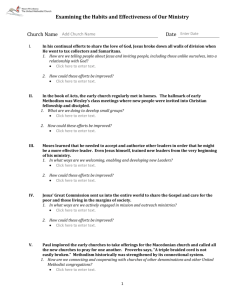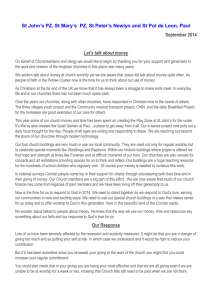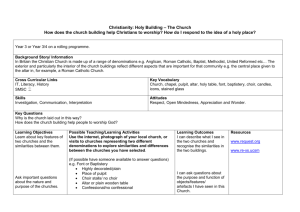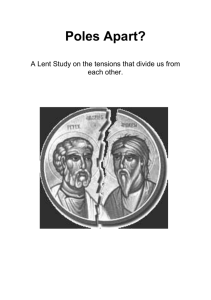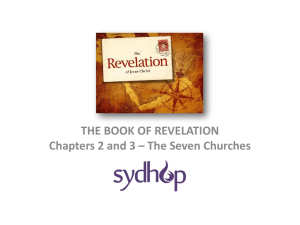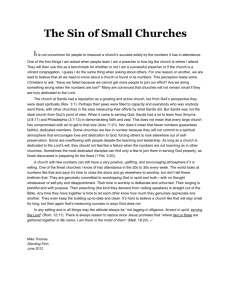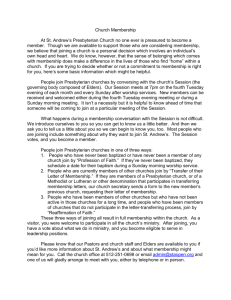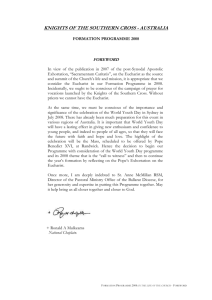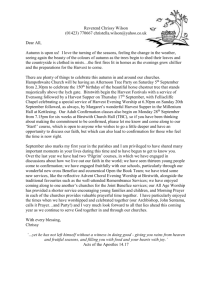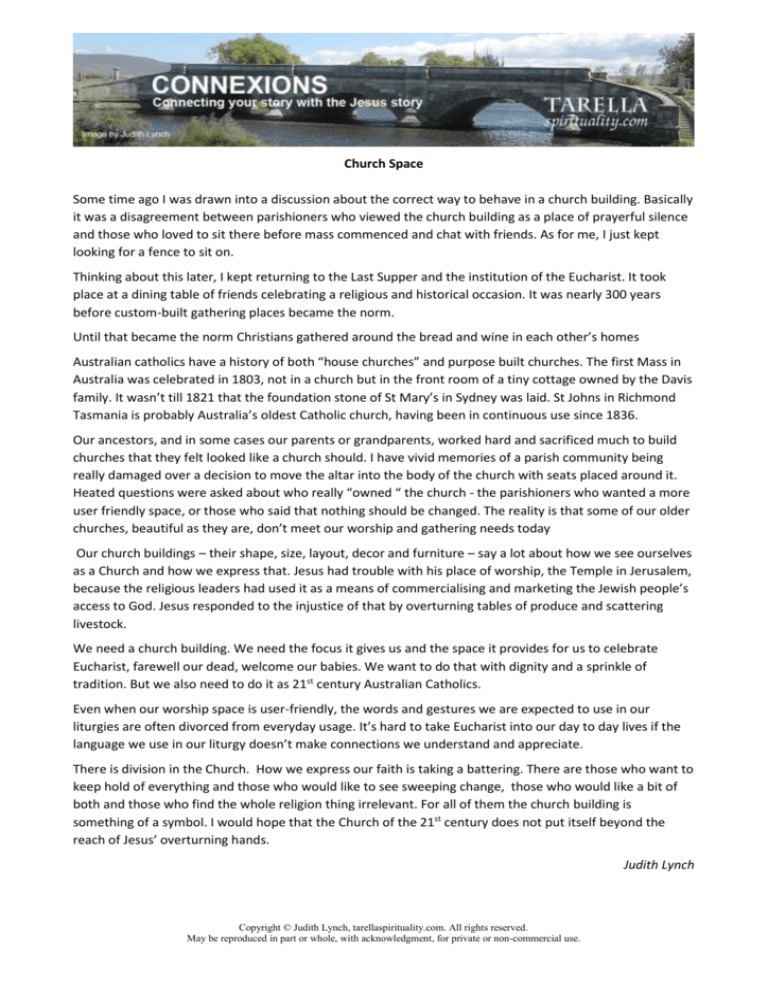
Church Space
Some time ago I was drawn into a discussion about the correct way to behave in a church building. Basically
it was a disagreement between parishioners who viewed the church building as a place of prayerful silence
and those who loved to sit there before mass commenced and chat with friends. As for me, I just kept
looking for a fence to sit on.
Thinking about this later, I kept returning to the Last Supper and the institution of the Eucharist. It took
place at a dining table of friends celebrating a religious and historical occasion. It was nearly 300 years
before custom-built gathering places became the norm.
Until that became the norm Christians gathered around the bread and wine in each other’s homes
Australian catholics have a history of both “house churches” and purpose built churches. The first Mass in
Australia was celebrated in 1803, not in a church but in the front room of a tiny cottage owned by the Davis
family. It wasn’t till 1821 that the foundation stone of St Mary’s in Sydney was laid. St Johns in Richmond
Tasmania is probably Australia’s oldest Catholic church, having been in continuous use since 1836.
Our ancestors, and in some cases our parents or grandparents, worked hard and sacrificed much to build
churches that they felt looked like a church should. I have vivid memories of a parish community being
really damaged over a decision to move the altar into the body of the church with seats placed around it.
Heated questions were asked about who really “owned “ the church - the parishioners who wanted a more
user friendly space, or those who said that nothing should be changed. The reality is that some of our older
churches, beautiful as they are, don’t meet our worship and gathering needs today
Our church buildings – their shape, size, layout, decor and furniture – say a lot about how we see ourselves
as a Church and how we express that. Jesus had trouble with his place of worship, the Temple in Jerusalem,
because the religious leaders had used it as a means of commercialising and marketing the Jewish people’s
access to God. Jesus responded to the injustice of that by overturning tables of produce and scattering
livestock.
We need a church building. We need the focus it gives us and the space it provides for us to celebrate
Eucharist, farewell our dead, welcome our babies. We want to do that with dignity and a sprinkle of
tradition. But we also need to do it as 21st century Australian Catholics.
Even when our worship space is user-friendly, the words and gestures we are expected to use in our
liturgies are often divorced from everyday usage. It’s hard to take Eucharist into our day to day lives if the
language we use in our liturgy doesn’t make connections we understand and appreciate.
There is division in the Church. How we express our faith is taking a battering. There are those who want to
keep hold of everything and those who would like to see sweeping change, those who would like a bit of
both and those who find the whole religion thing irrelevant. For all of them the church building is
something of a symbol. I would hope that the Church of the 21st century does not put itself beyond the
reach of Jesus’ overturning hands.
Judith Lynch
Copyright © Judith Lynch, tarellaspirituality.com. All rights reserved.
May be reproduced in part or whole, with acknowledgment, for private or non-commercial use.



